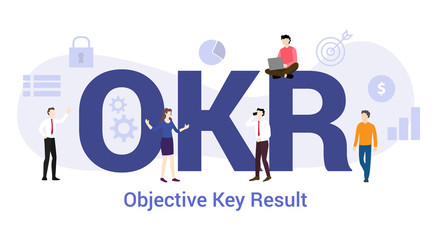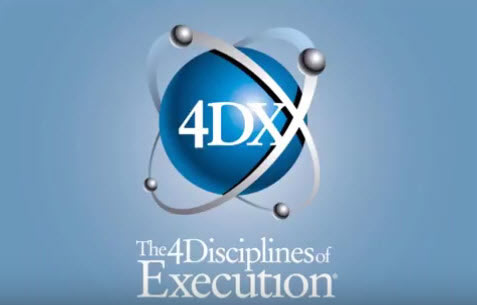Send Us a Message
Contact Information
Skizzle Technolabs India Pvt. Ltd.
Noel Focus, Kakkanad,
Kerala, India – 682021
Every organization’s path to success begins by setting the right goals.
How are you setting the right goals? How do you align people, teams, and your whole organization’s objectives together?
The Answer: Effective Goal Management.
However, when you see so many methodologies for setting goals around you, things become complex. For example, OKR, EFQM, SMART goals, 4DX, etc.
Objectives and Key Results (OKR) is an objective-setting methodology that helps organizations, through the use of available resources, to reach a number of Key Results for measurable Objectives.

Two main components in OKR:
The Objectives tend to be the desired outcome that you want, and the Key Results are the measurable ways to reach them.
Stephen R. Covey and Chris McChesney have developed the precise framework to support businesses to execute effectively. The 4 disciplines help organizations to achieve extraordinary results through the best possible execution of business strategies.

The 4 disciplines are:
Let’s discuss more on the 4 disciplines and how they operate.
1. Focus on the Wildly Important Goals (WIGs)
The first principle of 4DX covers how to create goals and ensure focus. Like OKR, 4DX states that the more goals a person or team has to achieve, the less focus they have. Many organizations simply have too many competing priorities or initiatives to be truly effective and 4DX forces teams to focus on one or two WIGs (Wildly Important Goals).
Similar to OKRs, WIGs have a clearly defined structure “from x to y by when” giving each goal a scope and a deadline. Additionally, the process of choosing WIGs has 4 rules.
Let’s check out the 4 sub-rules now.
Rule #1: No team concentrates on more than two WIGs simultaneously.
This rule ensures focus.
Rule #2: The battles you choose must win the war.
This rule ensures alignment in that the WIGs teams work on should contribute to achieving the overall goals of the organization.
Rule #3: Senior leaders can veto, but not dictate.
This rule ensures goals are set from the bottom up.
Rule #4: All WIGs must have a finish line in the form of “X to Y by when.”
This rule ensures clear scope for each goal.
2. Act on the Lead Measures (Leverage)
This discipline is all about what to measure. 4DX gives special focus to the difference between lead and lag measures and how one drives the other.
Two kinds of measure:
Lag: This measure focuses on the goals you are trying to achieve. Things like sales target, organic traffic, revenue, etc., are all part of lag measures. They are easy to track, and the results are precise.
Lead: This measure focuses on using predictive activities to drive changes in the lag measures.
3. Keep a Compelling Scoreboard (Engagement)
Principle 3 covers how to keep score with goals and their measures in place. The key to this principle is to keep scorecards simple. Gone are the complicated spreadsheets and formulas often associated with strategic plans. 4DX replaces them with scorecards for each WIG that track a maximum of 6 lead or lag measures.
4DX recommends that these scorecards are designed by the teams themselves and points to the importance of keeping score in driving engagement. When teams know if they’re winning or losing, they are more likely to focus on performing.
Elements of a well-designed scorecard
4. Create a Cadence of Accountability
The final principle of 4DX covers accountability or, more specifically, accounting for the past and planning for the future. This happens in weekly WIG meetings. WIG meetings follow a 3-part structure of account, review, plan, where teams review previous commitments and the scoreboard and agree upon the next actions.
OKR and 4DX are similar in many ways. Both help managers and teams set goals and execute strategy, both help achieve focus, alignment, and engagement, and both are lightweight and relatively easy for most people to grasp. The difference is how OKR and 4DX structure the process of strategy execution.
A key difference between the two is Cadence. While setting up WIGs, you mostly follow it up with weekly WIG meetings. You monitor lead and lag measures regularly and keep on executing the same strategy till you win. OKRs, on the other hand, can be set quarterly/ annually.
Depending upon the need of the hour, OKRs can be adjusted to reflect the strategic demands. In this rapidly unstable business environment, adapting is the key to survival for any organization out there. What worked today will not work tomorrow.
In 4DX the first 3 principles describe the structure, creation, and measurement of goals while the 4th principle describes a weekly cadence of review, with each review having a clear structure and time limit. This differs from OKR in that cadences in OKR are built to reflect the organizational heartbeat; yearly closing and creation of Company OKRs, quarterly closing and creation of Group OKRs, and regular check-ins in the meantime.
Unlike OKR, 4DX doesn’t distinguish between strategic and tactical goals but instead focuses heavily on 2 types of measures.
To round out this comparison, the best way to describe 4DX is a framework that fits between OKR and SMART goals.
Both OKR and 4DX, in their very nature, require a fundamental shift towards a more co-operative, transparent, and data-driven organization’s culture. Whereas 4DX helps organizations implement a certain set of goals, OKRs not only integrate but unite all business entities into a common priority-setting, execution, and success process.
OKRs preach for organizational alignment, as a goal-setting system. The practice of setting (strategic) long-term goals and dividing them into tactical (executive) objectives is essential not only for the methodology of the OKRs but also increases organizations’ chances of reaching their top priorities. It also enhances the visibility of team and individual contributions for key players. This, in turn, makes it possible to better decide on your organization and to fill the strategy-development gap.
Regardless of the goal-setting methods you use, you need to be able to track your achievement against your goals. Otherwise, you can’t figure out how close an objective is to achieve or why a specific aim has been achieved or failed. Goal tracking is one of many reasons why employee tracking software like SkizzleHR is important. Thankfully with SkizzleHR’s employee tracking dashboard, you can check deadlines, provide feedback, break down projects into manageable tasks, and generate the data needed to track goals to completion.
Looking to get started with OKRs or 4DX? Join SkizzleHR Beta and get unrestricted access to all the features Free for a year long.

High-performing teams are the distinctive feature of an industry-leading business. This can ensure the business's success in the long run. Working in a team...
Read More
Since the pandemic hit the world, the new normal is working from home. Gen Y and Gen Z are the largest workforce units of...
Read More
You have much to consider when looking for a solution for human resources (HR) technology. What is the right fit for you? How are...
Read More
As we have seen human resources and information technology have become more intertwined during the last decade. Manufacturing, financials, sales and marketing, and supply...
Read MoreSkizzle Technolabs India Pvt. Ltd.
Noel Focus, Kakkanad,
Kerala, India – 682021